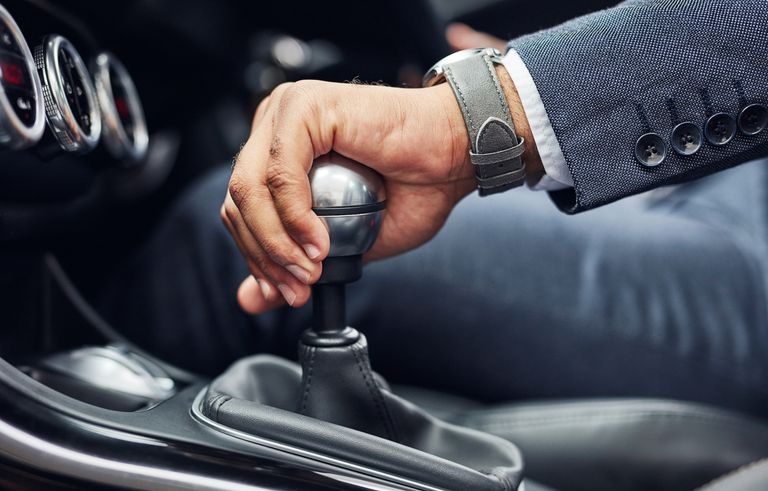Why Car Manufacturers Aren't Making Stick Shifts Anymore
As automatic transmission becomes the new norm among younger generations of drivers, cars with manual transmission are becoming a rarer commodity. In fact, only a meager one percent of new cars sold in the United States in 2021 were stick shifts. While some car enthusiasts remain adamant that manual transmission is the "real" way of driving, the majority of drivers seem to disagree with this sentiment, instead opting for their automatic counterparts. Let's take a look at the reasons behind why car manufacturers aren't making stick shifts anymore, while also seeing why some are persisting with this seemingly outdated design.
The growing auto trend
As a country known for seeking excessive comfort and convenience, it comes as no surprise that Americans would look for ways to make driving more luxurious. In the 1950s, vehicles with automatic transmission were introduced to the market, however, much like many new innovations, it was not widely available nor affordable. Often, the automatic transmission was offered as an optional add-on rather than a basic feature. As they grew in popularity, however, a greater range of car manufacturers started to offer vehicles with automatic transmission, making them more accessible and affordable to the public. This was just the start of the decline of the shift stick.
Ease of use
It wasn't simply the excitement and novelty of automatic driving that thrilled American drivers — they also appreciated how much easier driving was made thanks to this innovation. Suddenly, driving up steep hills became smoother and required less technical expertise while stopping and starting in traffic jams became smoother without having to constantly shift gears. The one initial drawback of automatic cars, however, was that they did not initially shift as smoothly as their manual counterparts. Over time, this aspect was refined, resulting in automatic transmission cars holding several advantages over shift stick vehicles. Still, numerous car manufacturers have worked towards providing both automatic and manual options, developing systems that are automatic by default, yet can shift into manual should the driver choose to do so. While the automatic revolution was well underway, there was one area where manual transmissions still reigned supreme — the sports car market.
The need for speed
For many sports car enthusiasts, the sense of control and connection that comes with shifting gears is a crucial part of the driving experience. It is for this reason that this has become the last automotive market segment to let automatic transmission into their lives. Noticing sports car enthusiasts' cravings, some manufacturers have chosen to continue producing manual versions of their cars. Companies like Porsche and Honda, while focusing heavily on their automatic transmission vehicles, still offer some manual options as they acknowledge the fun of driving stick. As time goes by, however, sports car enthusiasts' craving for manual rides is declining, particularly since automatic transmissions are actually overtaking manuals in terms of performance. With the emergence of features such as dual-clutch transmissions and continuously variable transmissions, automatic cars are on route to leaving their manual counterparts in the dust. But is the future fate of manual cars well and truly sealed?
The fate of the stick shift
While fun to drive, those consumers who are after the latest driving technology will be left disappointed if they don't abandon their stick shift cars. Many new features, ranging from cruise control to parking assist, are not compatible with manual transmissions. Given this issue, there seem to be few redeeming qualities left for vehicles with manual transmission. Still, with more than 20 percent of our sports car buyers looking to drive with a shift stick, it seems like nostalgia and the passion for sports cars may just save them from extinction yet.
